This article was medically reviewed by Luba Lee, FNP-BC, MS. Luba Lee, FNP-BC is a Board-Certified Family Nurse Practitioner (FNP) and educator in Tennessee with over a decade of clinical experience. Luba has certifications in Pediatric Advanced Life Support (PALS), Emergency Medicine, Advanced Cardiac Life Support (ACLS), Team Building, and Critical Care Nursing. She received her Master of Science in Nursing (MSN) from the University of Tennessee in 2006.
There are 12 references cited in this article, which can be found at the bottom of the page.
This article has been viewed 57,175 times.
Although a heel bruise is not considered a serious injury, the pain and swelling it causes can be quite debilitating. When the heel is injured from repetitive overuse or a high impact, it’s important to take care of yourself and give it time to heal properly. In most cases some rest and basic home care will help your injured foot heal and avoid future injuries. For more persistent or repeat heel injuries, you may need to seek expert medical care.
Steps
Treating the Bruise at Home
-
1Avoid walking or standing on the injured foot until it no longer hurts. The best remedy for a bruised heel is to stay off your feet. By giving it time to rest, you will allow your body to heal.[1]
- Most mild bruises should start to feel better after 2 to 3 days, but some pain may linger for several weeks or even years if caused by a deeper injury.
- If you absolutely cannot rest and you have to move about, try using crutches or a knee scooter to get around without putting your weight on your foot.[2]
- Buy these assistive devices at a medical supply store or pharmacy, or you can have one delivered to you if you shop online.
-
2Take ibuprofen or acetaminophen to ease your pain. These common over-the-counter pain relievers are safe to use when taken according to their dosage instructions. Either option can reduce pain, but ibuprofen can also reduce inflammation. Follow the instructions provided on the medication you choose. Consult your doctor or pharmacist with any questions about these options.[3]
- Do not take these medications for more than 10 days. Consult your doctor if your condition does not improve after 3 days or if your pain gets worse.
Advertisement -
3Ice your heel for 20 minutes every 2-3 hours to reduce swelling. Wrap a bag of ice, an ice pack, or even a bag of frozen peas, in a towel. Place the heel on top of the wrapped ice and leave there, resting it gently, for 20 minutes. Remove and repeat as needed every 2 to 3 hours.[4]
- Consult your doctor if your heel shows no signs of improvement after 2-3 days as this could be a sign of a more serious injury.
- As an alternative, you can soak your heel for up to 20 minutes in ice water. Remove your heel from the water every few minutes to make sure it's not getting too cold.
-
4Wear shoes with a 2–3 cm (0.79–1.18 in) heel to relieve pressure. Although it may seem counterintuitive at first, wearing a comfortable pair of low-heeled shoes can help reduce pressure on your heel. By redirecting your body’s weight forward, to the ball of your foot, this approach can help ease you back onto your feet once the worst of your injury has healed.[5]
- Use cushioned inserts to provide extra support to both your sore heel and to the ball of your foot, which may be bearing more weight than usual while your injury heals.
-
5Try a gentle stretch to reduce pain and tightness. Sit on the floor with your legs stretched out straight in front of you. Holding a towel at two ends, loop the middle around the balls of your feet. Pull gently backwards to stretch out your foot. Release and repeat as necessary.[6]
- In addition to your bruised heel, the muscles in your foot and ankle may experience tightness as a result of your injury.
-
6Use heel pads or cups to reduce pressure from standing. You can purchase heel pads or cups at a pharmacy or online. These devices minimize the amount of contact and pressure your heel experiences while you walk. The best way to repair a heel bruise is to stay off your feet. However, once you do begin walking on it again these inserts can be worn inside your shoes to cushion your heel.[7]
- A heel pad essentially provides cushion upon impact between your heel and the ground when you walk.
- A heel cup works similarly, except that it is designed to curve up the back and sides of your heel slightly, which can provide additional support as you recover.
- Always wear these on both feet because only wearing support on one side will distribute your weight unevenly.
-
7Wrap your heel with 1⁄2 in (1.3 cm) medical tape for relief from pain. Wrapping a heel with medical tape provides a similar function to the heel pad or cup, except it can be personalized and worn even when you aren’t wearing shoes.[8] By providing compression on the tissues surrounding the heel, you can reduce pain and help keep the heel’s fat pad stabilized while it heals.[9]
- Place one strip of tape that runs from the middle of your foot’s arch around the bottom of the heel to the mid-point of your foot on the other side.[10]
- Point the toes gently upward. Using 3 in (7.6 cm) strips of tape, wrap your heel tightly beginning at the top of the heel pad from the outside of your foot to your arch-side.[11]
- Continue wrapping as you move down towards the bottom of the heel, overlapping the strips of tape slightly so that there are no gaps between the pieces. Leave about 1⁄4–1⁄2 in (0.64–1.27 cm) of your heel uncovered at the bottom.[12]
- Secure all the strips of tape with a final longer piece (approximately 6 in (15 cm) in length) wrapped around the outside of the foot.[13]
-
8Try self-massage once a day to lessen your heel pain. Use the pads of your fingers or thumb to gently rub the back of your heel or the bottom of your heel. Stroke back and forth over the area to increase blood flow and help relieve pain. Rub your heel for 3-6 minutes at at time.[14]
- This may cause some discomfort, so stop rubbing your ankle if it hurts.
- Don't press down very hard over the area.
Visiting the Your Doctor
-
1Schedule an appointment to see your doctor. If your pain worsens or if it hasn’t gotten any better with home care after 3 to 5 days, then you should have your healthcare provider examine it. Call your usual doctor and explain why you need to be seen.[15]
- Depending on what your doctor sees during the exam, they may want to refer you to a podiatrist or physical therapist. These are medical experts who specialize in foot and movement issues.
-
2Rule out more serious conditions. There are a number of reasons why your heel may hurt. Even if it is “just a bruise,” there may be an underlying reason that your doctor can diagnose. If your heel injury returns or does not go away on its own, your doctor may need to consider the possibility of a heel fracture, plantar fasciitis, or arthritis.[16]
- Your doctor may order an x-ray or an MRI to look for fractures or nerve damage.
-
3Undergo a gait analysis. A physical therapist can help you identify problems with your gait, or how you walk, that could be contributing to recurring heel pain. A physical therapist will do a physical examination and a visual assessment of your gait when you walk or run. They may also use digital sensors to collect data about pressure and force on different parts of your foot when you walk. There are even wearable sensors that you can use to collect data over a longer period of time.[17]
- Your physical therapist can talk with you about the best approach for analyzing your gate.
- If problems are found, they can help you retrain yourself to walk and run without overstressing your heel.
Warnings
- Seek immediate medical care if you experience severe heel pain following an injury, your foot is in a strange shape, you heard a snap, grinding, or popping noise when you injured it, or if you have difficulty moving your ankle or foot. These could be signs of a more serious injury like a broken bone or ruptured tendon.[18]⧼thumbs_response⧽
References
- ↑ https://www.nhs.uk/conditions/foot-pain/heel-pain/
- ↑ https://orthoinfo.aaos.org/en/recovery/how-to-use-crutches-canes-and-walkers/
- ↑ https://www.nhs.uk/conditions/heel-pain/
- ↑ https://www.nhs.uk/conditions/foot-pain/heel-pain/
- ↑ https://www.betterhealth.vic.gov.au/health/conditionsandtreatments/foot-problems-heel-pain
- ↑ https://www.csp.org.uk/public-patient/rehabilitation-exercises/foot-pain
- ↑ https://www.nhs.uk/conditions/foot-pain/heel-pain/
- ↑ https://my.clevelandclinic.org/health/articles/10060-heel-pain
- ↑ https://youtu.be/nQtkwfJrhXo?t=1
- ↑ https://youtu.be/DTmcVzrka1Q?t=28
- ↑ https://youtu.be/DTmcVzrka1Q?t=60
- ↑ https://youtu.be/DTmcVzrka1Q?t=127
- ↑ https://youtu.be/DTmcVzrka1Q?t=147
- ↑ https://www.betterhealth.vic.gov.au/health/conditionsandtreatments/foot-problems-heel-pain
- ↑ https://my.clevelandclinic.org/health/articles/10060-heel-pain
- ↑ https://my.clevelandclinic.org/health/articles/10060-heel-pain
- ↑ https://www.physio-pedia.com/Gait#Gait_Analysis
- ↑ https://www.nhs.uk/conditions/foot-pain/heel-pain/
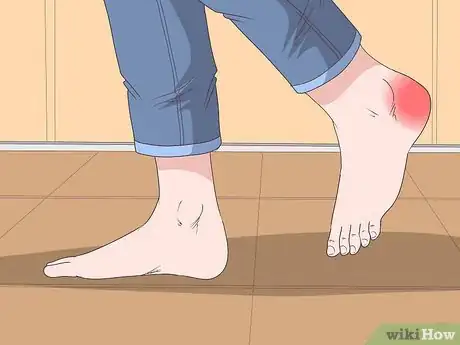
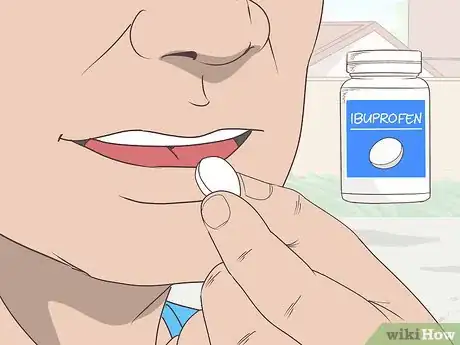
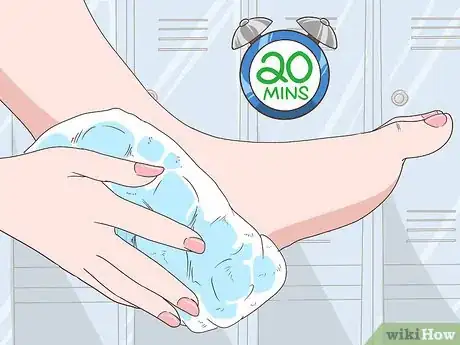
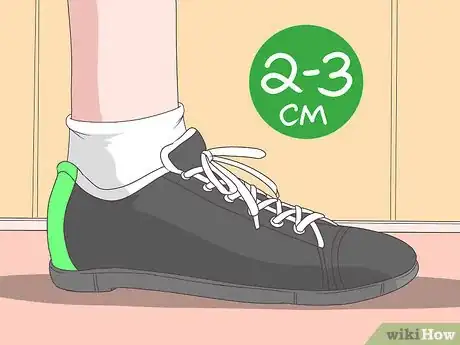
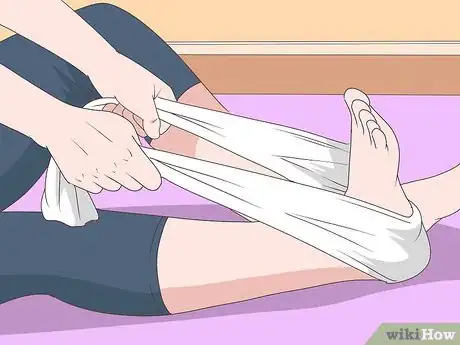
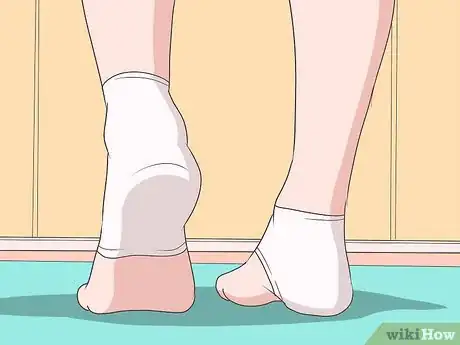
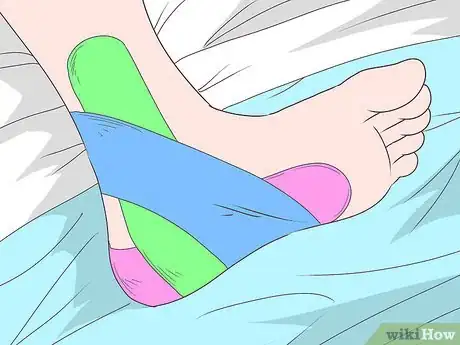

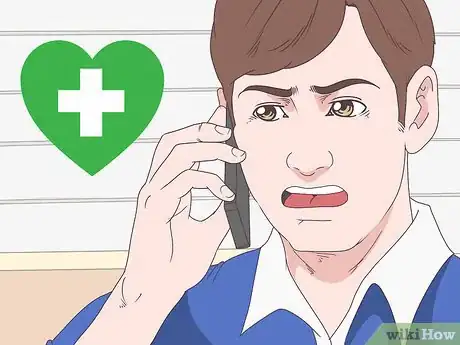


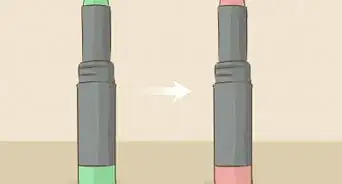
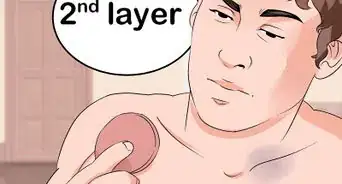
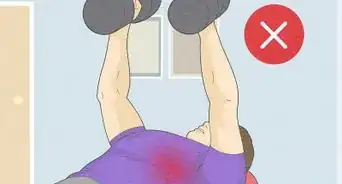

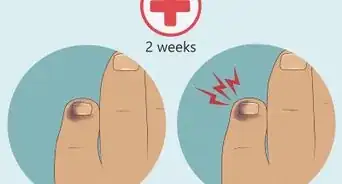


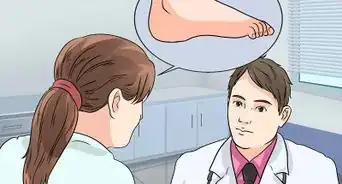
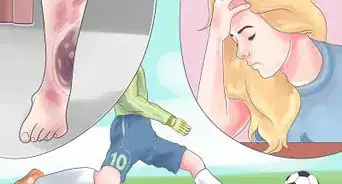
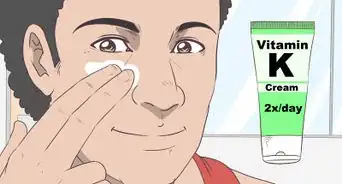
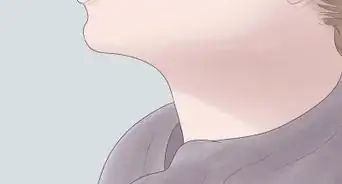
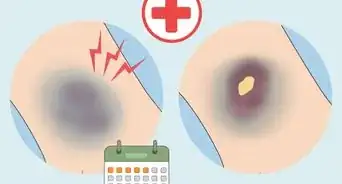











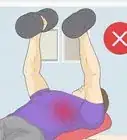





































Medical Disclaimer
The content of this article is not intended to be a substitute for professional medical advice, examination, diagnosis, or treatment. You should always contact your doctor or other qualified healthcare professional before starting, changing, or stopping any kind of health treatment.
Read More...